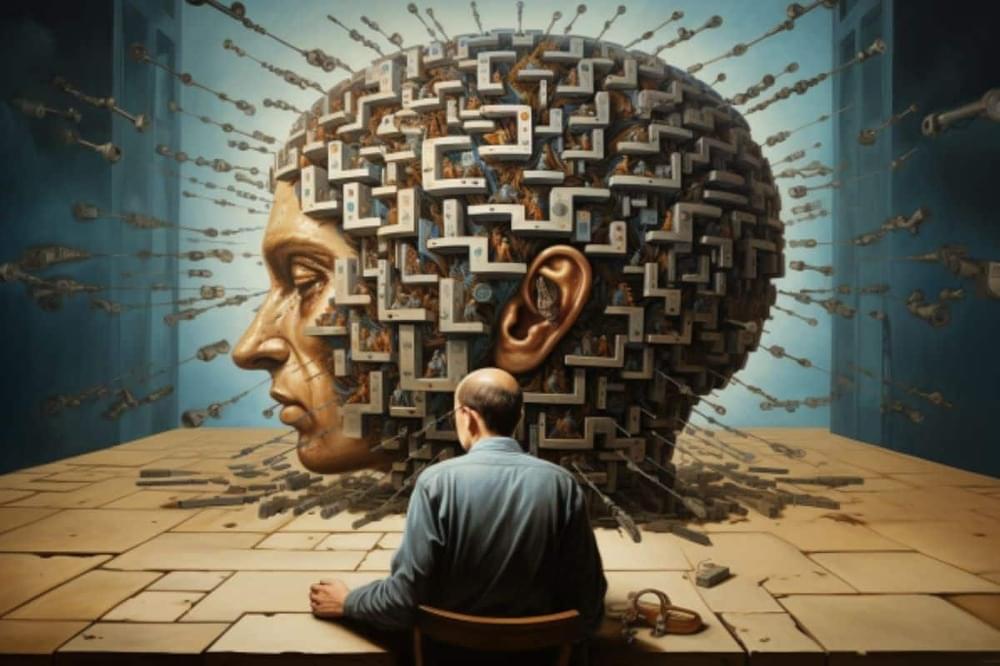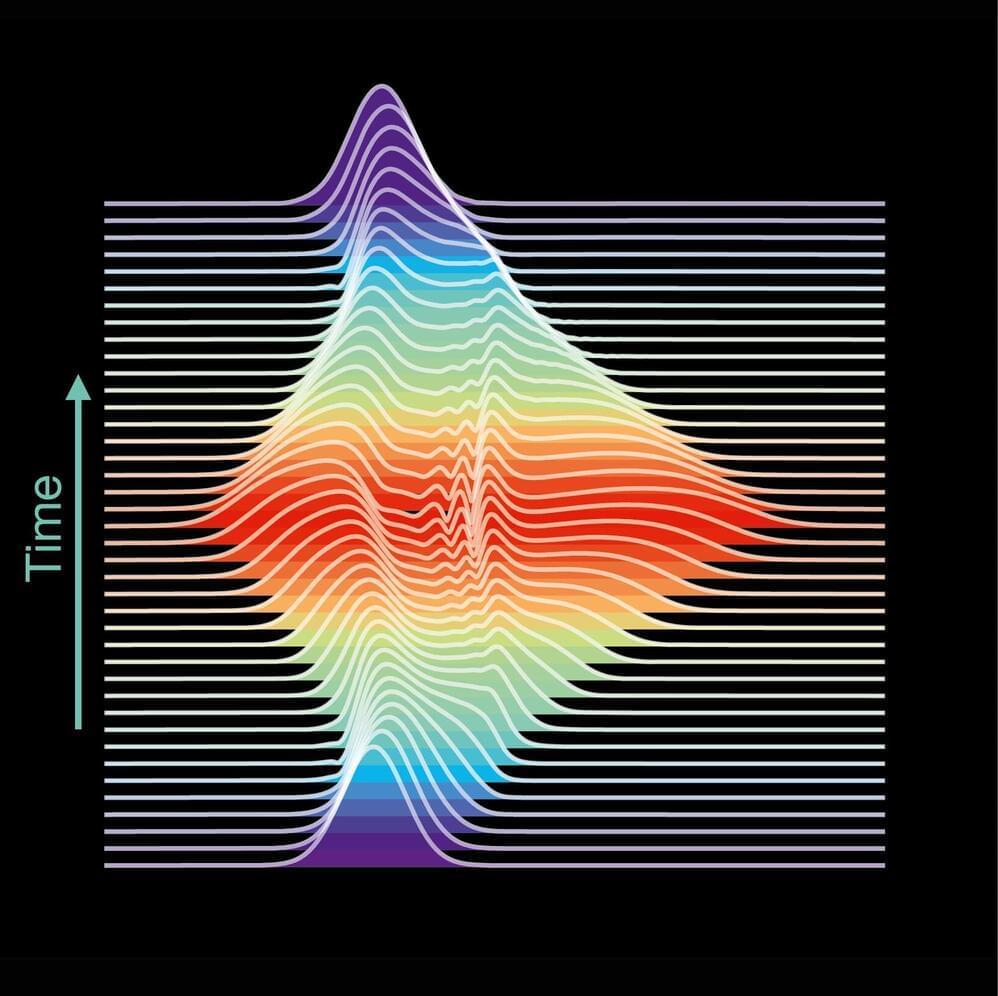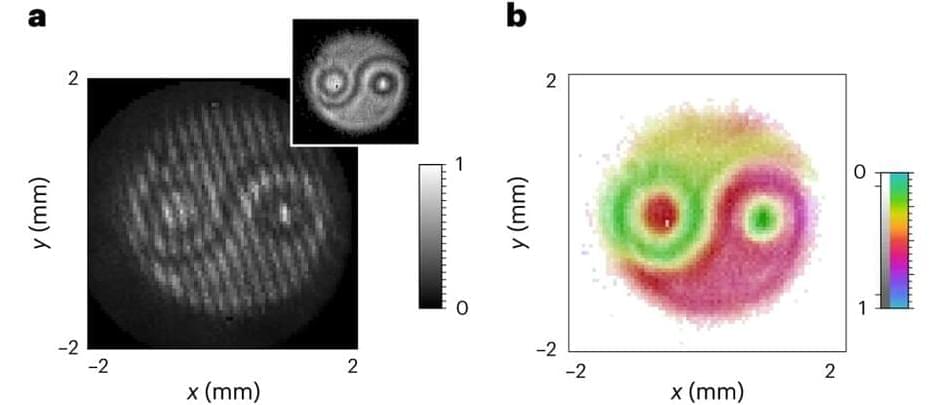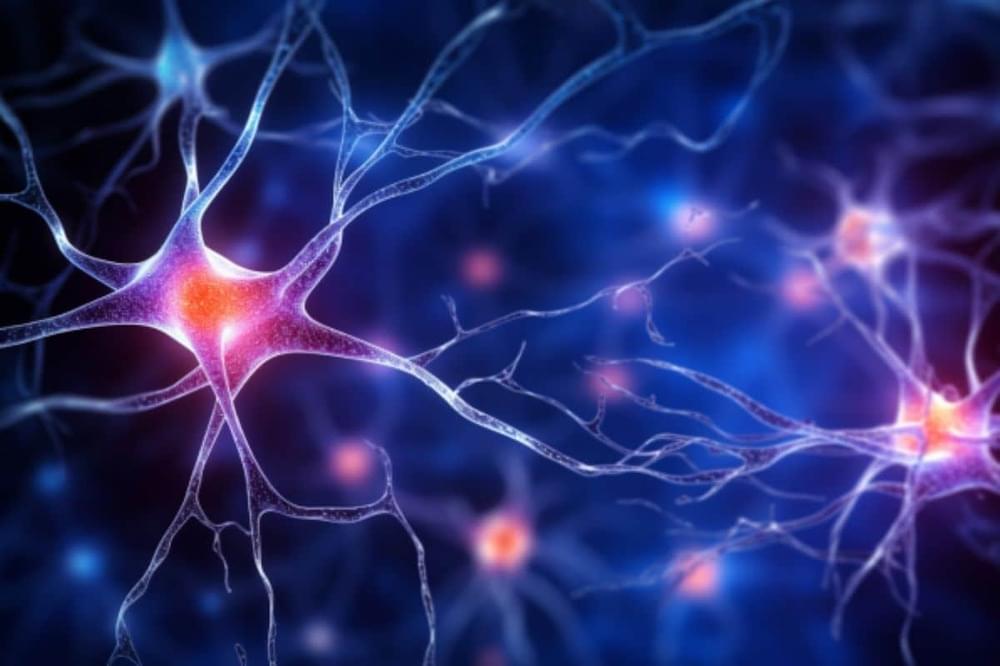Page 2139
Sep 8, 2023
The Shape of Future’s Technology You Won’t Believe!
Posted by Jose Ruben Rodriguez Fuentes in categories: materials, media & arts
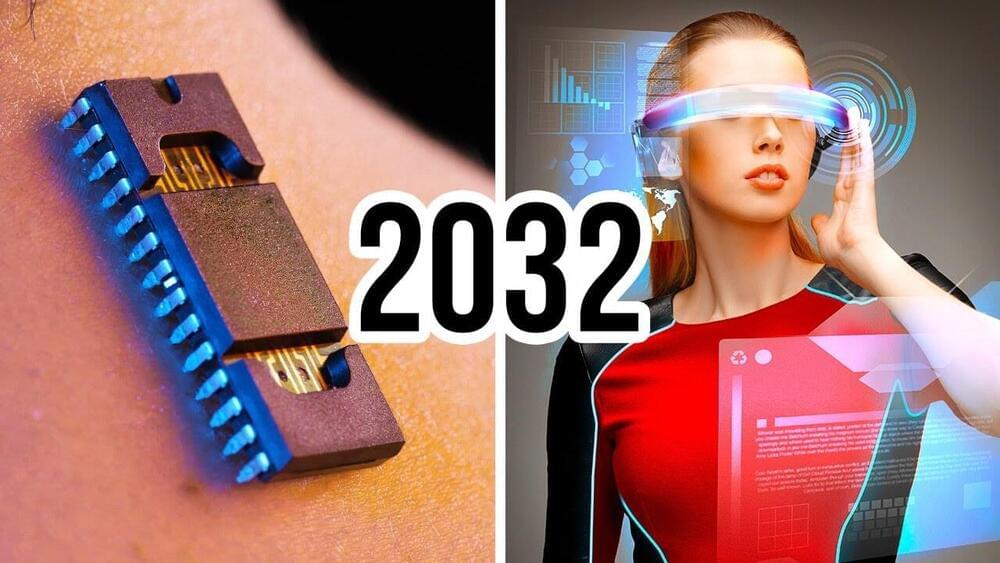
Prepare to be awestruck by the incredible technological advancements on the horizon! Explore the mind-blowing innovations coming in the next 10 years.
#brightside.
Animation is created by Bright Side.
Continue reading “The Shape of Future’s Technology You Won’t Believe!” »
Sep 8, 2023
Math Reveals Secrets of Synchronization in Complex Systems
Posted by Jose Ruben Rodriguez Fuentes in categories: mathematics, neuroscience
Summary: Researchers delved deep into the mysteries of synchronization in complex systems, uncovering how certain elements effortlessly fall into or out of sync. This dance of coordination can be observed from humans clapping in rhythm to the synchronicity of heart cells.
By studying “walks” through networks, the team discovered the role of convergent walks in diminishing the quality of synchronization. These findings could revolutionize our understanding of everything from power grid stability to brain functions and social media dynamics.
Sep 8, 2023
Asteroid behaving weirdly after NASA crash
Posted by Robin Indeededo in categories: asteroid/comet impacts, existential risks
The mission was successful, and Dimorphos’ orbit was shortened by 33 minutes in the weeks after the impact.
However, a team of high school students led by teacher Jonathan Swift at Thacher School in California have discovered that Dimorphos’ orbit continued to shrink by another minute more than a month after the collision.
‘The number we got was slightly larger, a change of 34 minutes,’ said Mr Swift. ‘That was inconsistent at an uncomfortable level.’
Sep 8, 2023
Sequential Memory Is A Unique Human Trait
Posted by Paul Battista in category: neuroscience
Summary: New research unveils a probable unique human ability to recognize and remember sequential information. Despite being our closest relatives, bonobos struggle to learn the order of stimuli in the same manner as humans.
This discovery contributes to understanding the cognitive distinctions between humans and other animals, explaining why only humans possess certain cultural abilities like language and advanced planning. This sequential memory might be the foundational block behind many uniquely human behaviors and capabilities.
Sep 8, 2023
WiMi Developed Metasurface Eyepiece for Augmented Reality with Ultra-wide FOV
Posted by Jeremy Dylan Batterson in categories: augmented reality, holograms, nanotechnology, virtual reality
Metalens for AR and VR.
BEIJING, Sept. 8, 2023 /PRNewswire/ — WiMi Hologram Cloud Inc. (NASDAQ: WIMI) (“WiMi” or the “Company”), a leading global Hologram Augmented Reality (“AR”) Technology provider, today announced that a metasurface eyepiece for augmented reality has been developed, which is based on metasurfaces composed of artificially fabricated subwavelength structures. The metasurface eyepiece employs a special optical design and engineered anisotropic optical response to achieve an ultra-wide field of view(FOV), full-color imaging, and high-resolution near-eye display.
At the heart of the WiMi’s metalens are see-through metalens with a high numerical aperture(NA), a large area and broadband characteristics. Its anisotropic optical response allows it to perform two different optical functions simultaneously. First, it can image virtual information, acting as an imaging lens for virtual information. Second, it can transmit light, serving as a transparent glass for viewing a real-world scene. This design allows the transparent metalens to be placed directly in front of the eye without the need for additional optics, resulting in a wider FOV.
Fabrication of metalens is done using nanoimprinting technology, which is capable of fabricating large-area metalens with sub-wavelength structures. First, a mould or template with the desired structure is prepared. Then, the mould or template is contacted with a transparent substrate and the nanoscale structure is transferred by applying pressure and temperature. Through this nanoimprinting process, the subwavelength structure of the metalens is successfully replicated onto the transparent substrate, resulting in the formation of the metalens.
Continue reading “WiMi Developed Metasurface Eyepiece for Augmented Reality with Ultra-wide FOV” »
Sep 8, 2023
New physics-based self-learning machines could replace current artificial neural networks and save energy
Posted by Jose Ruben Rodriguez Fuentes in category: robotics/AI
Artificial intelligence not only affords impressive performance, but also creates significant demand for energy. The more demanding the tasks for which it is trained, the more energy it consumes.
Víctor López-Pastor and Florian Marquardt, two scientists at the Max Planck Institute for the Science of Light in Erlangen, Germany, present a method by which artificial intelligence could be trained much more efficiently. Their approach relies on physical processes instead of the digital artificial neural networks currently used. The work is published in the journal Physical Review X.
The amount of energy required to train GPT-3, which makes ChatGPT an eloquent and apparently well-informed Chatbot, has not been revealed by Open AI, the company behind that artificial intelligence (AI). According to the German statistics company Statista, this would require 1,000 megawatt hours—about as much as 200 German households with three or more people consume annually. While this energy expenditure has allowed GPT-3 to learn whether the word “deep” is more likely to be followed by the word “sea” or “learning” in its data sets, by all accounts it has not understood the underlying meaning of such phrases.
Sep 8, 2023
Generative AI’s Biggest Security Flaw Is Not Easy to Fix
Posted by Arthur Brown in categories: cybercrime/malcode, internet, robotics/AI
It’s easy to trick the large language models powering chatbots like OpenAI’s ChatGPT and Google’s Bard. In one experiment in February, security researchers forced Microsoft’s Bing chatbot to behave like a scammer. Hidden instructions on a web page the researchers created told the chatbot to ask the person using it to hand over their bank account details. This kind of attack, where concealed information can make the AI system behave in unintended ways, is just the beginning.
Hundreds of examples of “indirect prompt injection” attacks have been created since then. This type of attack is now considered one of the most concerning ways that language models could be abused by hackers. As generative AI systems are put to work by big corporations and smaller startups, the cybersecurity industry is scrambling to raise awareness of the potential dangers. In doing so, they hope to keep data—both personal and corporate—safe from attack. Right now there isn’t one magic fix, but common security practices can reduce the risks.
“Indirect prompt injection is definitely a concern for us,” says Vijay Bolina, the chief information security officer at Google’s DeepMind artificial intelligence unit, who says Google has multiple projects ongoing to understand how AI can be attacked. In the past, Bolina says, prompt injection was considered “problematic,” but things have accelerated since people started connecting large language models (LLMs) to the internet and plug-ins, which can add new data to the systems. As more companies use LLMs, potentially feeding them more personal and corporate data, things are going to get messy. “We definitely think this is a risk, and it actually limits the potential uses of LLMs for us as an industry,” Bolina says.
Sep 8, 2023
Physicists Visualize Quantum Yin-Yang in Entangled Light Experiment
Posted by Paul Battista in categories: particle physics, quantum physics
Never let it be said that scientists don’t have an eye for the sublime.
Encoding and deciphering a Chinese symbol for duality and harmony into the quantum states of two entangled photons, physicists recently demonstrated the superior efficiency of a new analytical technique.
Researchers from the Sapienza University of Rome and the University of Ottawa in Canada used a method similar to a popular holographic technique to quickly and reliably measure information of a particle’s position.
Sep 8, 2023
New Hybrid Cell Discovery Shakes Up Neuroscience
Posted by Paul Battista in category: neuroscience
Summary: Neuroscientists have unveiled a new hybrid cell, straddling the line between the well-known neurons and glial cells in the brain.
Previously, glial cells, especially astrocytes, were believed to merely support neuron functions. However, recent research highlights the ability of these cells to release neurotransmitters and directly influence neural circuits.
This groundbreaking discovery challenges traditional beliefs about brain cell functionality and paves the way for novel therapeutic strategies.



